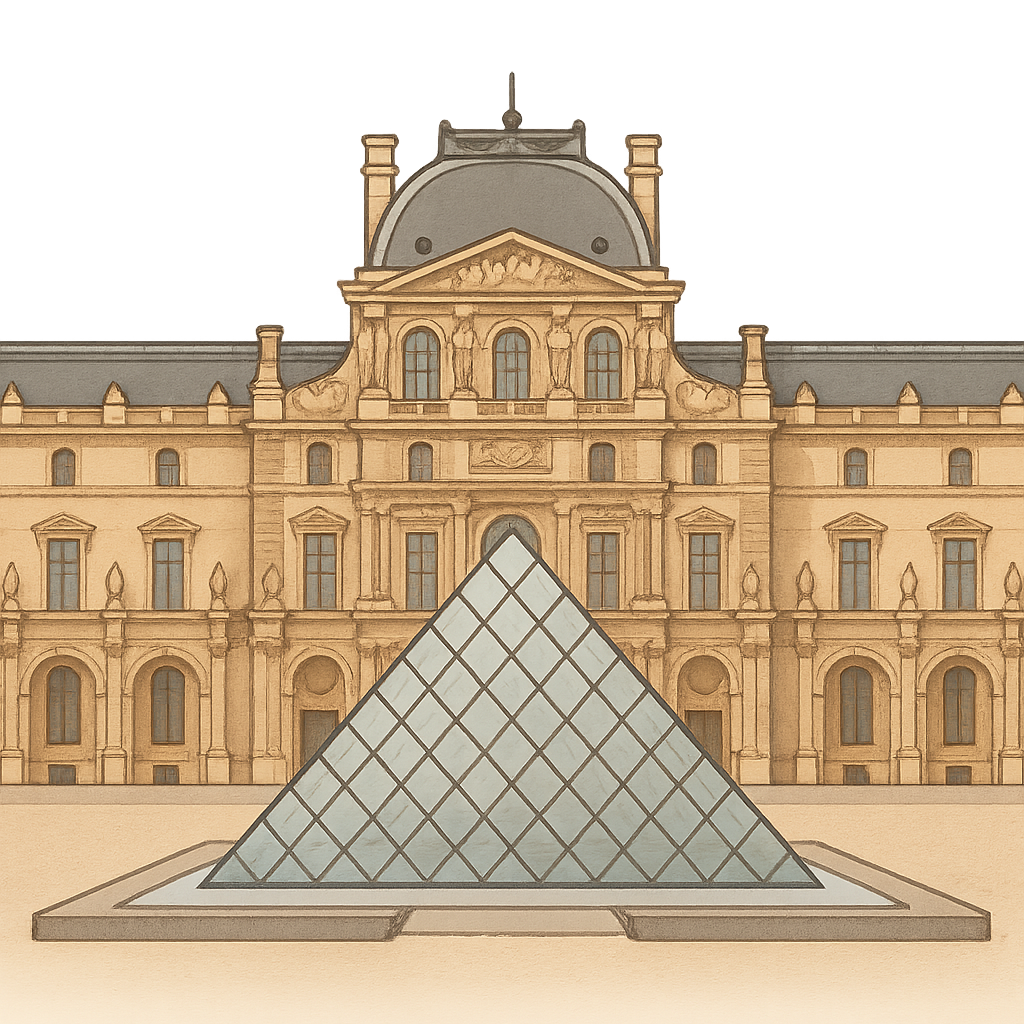The Palace of Treasures
In the heart of Paris, along the River Seine, stands a magnificent, sprawling palace of pale stone with countless windows that have seen centuries pass. In my main courtyard, a surprising and beautiful pyramid of glass sparkles in the sun, reflecting the sky. I am a place where history whispers from every corner and where art from across the world has come to live. I have been a fortress, a home for kings and queens, and now, a house of treasures for everyone. I am the Louvre.
My story begins a very long time ago, around the year 1190. I wasn't a beautiful palace then, but a tough, strong fortress with thick walls and a tall tower. King Philip II built me to protect Paris from invaders. For hundreds of years, I stood guard. Then, a king named Francis I decided in 1546 that he wanted a grand and beautiful home, not a gloomy fort. He and the kings who came after him knocked down my old walls and built the elegant palace you see today. They filled my halls with luxurious furniture, tapestries, and most importantly, art. King Francis I even invited the great artist Leonardo da Vinci to France, and that is how his most famous painting, the Mona Lisa, came to live with me.
I loved being a royal palace, but another big change was coming. King Louis XIV, the 'Sun King,' decided to build an even bigger palace outside the city, called Versailles. When he moved away in 1682, I became much quieter. For a while, artists and thinkers lived in my empty rooms. Then, during a time of great change in France called the French Revolution, the people decided that the royal art collection shouldn't belong to just kings and queens, but to everyone. On August 10, 1793, my doors opened as a public museum for the first time. Later, a famous leader named Napoleon Bonaparte brought even more treasures to my halls from his travels, making my collection grow bigger and more amazing than ever before.
Today, I am one of the most famous museums in the world. Millions of people visit me every year. They walk through my grand halls to see the mysterious smile of the Mona Lisa, the heroic Winged Victory of Samothrace, and the beautiful Venus de Milo. In 1989, a brand new entrance was built in my courtyard—the sparkling glass pyramid designed by the architect I. M. Pei. At first, some people thought it was too modern, but now it is a beloved symbol, a diamond of glass that connects my long past with the exciting future. I am a place where you can travel through time, explore different cultures, and see the incredible things people can create. My greatest treasure is the wonder and inspiration I share with every person who walks through my doors, reminding them that art and history belong to us all.
Reading Comprehension Questions
Click to see answer
